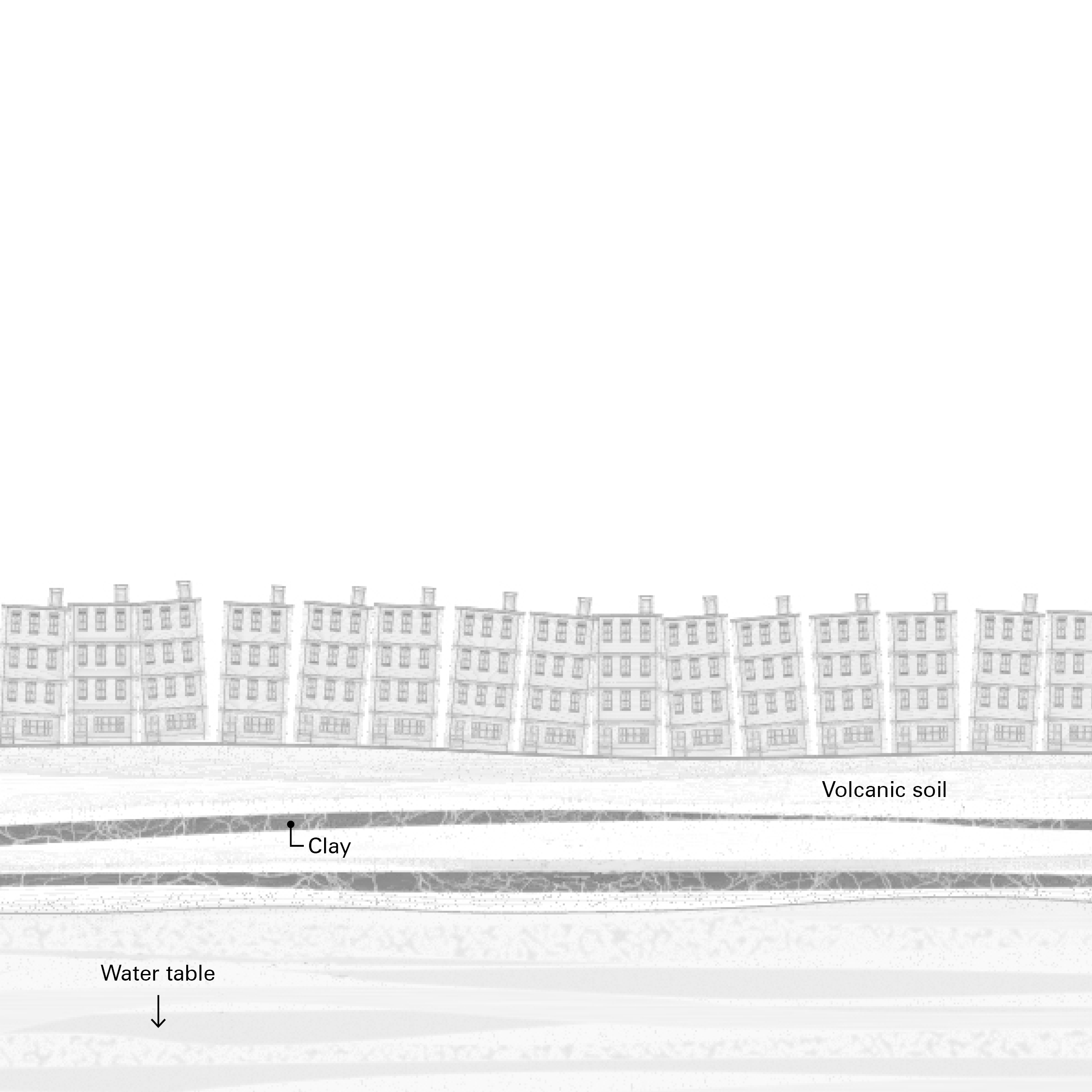
Subsidence is the sudden sinking or gradual downward settling of the ground's surface with little or no horizontal motion. It may be caused by natural processes or by human activities. The former includes aquifer-system compaction, drainage of organic soils, underground mining, hydro compaction, natural compaction, sinkholes, and thawing permafrost. Human activities include sub-surface mining or extraction of underground fluids, e. g. petroleum, natural gas, or groundwater.
Land subsidence is a global problem. Most cases are driven by the exploitation of groundwater by human activities to provide water for agriculture, industries, and daily water consumption in a city. There are profound problems that associated with the exploitation of groundwater such as, land subsidence, an increase of energy required to pump deeper well, a higher concentration of natural and manmade pollutants in the aquifers, saltwater intrusion, disrupted water ecosystem habitat, severe weather condition from the increase of precipitation, and to some extend impacting the local climate.
Mexico City was initially surrounded by Lake Texcoco and at the end of the 19th century, the city successfully drained the lake basin through the Grand drainage canal to the city of Tequixquiac. This effort of flood protection collectively sends surface water out of the city while extracting groundwater causes not enough natural water left to recharge the aquifer and resulted in the occurrence of land subsidence. Subsidence not only exposes new areas to flooding but also diminished the capacity of the Grand canal until it could no longer drain using gravity alone and later need to develop pump systems and deep drainage system.
In 2017, a woman named Maria Teresa has her apartment sink into the ground during an earthquake in Mexico City. The problem arises when insurance companies look for the cause of this collapse either it's by the earthquake or groundwater extraction. The answer could determine whether or not Maria Teresa and others like her will become homeless because subsidence-related damage is uninsurable in Mexico City while there is a robust insurance plan for earthquake-related disasters. The city has no plan to stop groundwater extraction, therefore subsidence is inevitable. From an insurance perspective, subsidence is not a disaster but a plan. Mexico City's failure to manage the surface water as a resource and aquifer overdraft now resulted in the city problem of flooding, scarcity of clean water for consumption, and other cases like Maria Teresa.
← Back to Lexicon
Land subsidence is a global problem. Most cases are driven by the exploitation of groundwater by human activities to provide water for agriculture, industries, and daily water consumption in a city. There are profound problems that associated with the exploitation of groundwater such as, land subsidence, an increase of energy required to pump deeper well, a higher concentration of natural and manmade pollutants in the aquifers, saltwater intrusion, disrupted water ecosystem habitat, severe weather condition from the increase of precipitation, and to some extend impacting the local climate.
Mexico City was initially surrounded by Lake Texcoco and at the end of the 19th century, the city successfully drained the lake basin through the Grand drainage canal to the city of Tequixquiac. This effort of flood protection collectively sends surface water out of the city while extracting groundwater causes not enough natural water left to recharge the aquifer and resulted in the occurrence of land subsidence. Subsidence not only exposes new areas to flooding but also diminished the capacity of the Grand canal until it could no longer drain using gravity alone and later need to develop pump systems and deep drainage system.
In 2017, a woman named Maria Teresa has her apartment sink into the ground during an earthquake in Mexico City. The problem arises when insurance companies look for the cause of this collapse either it's by the earthquake or groundwater extraction. The answer could determine whether or not Maria Teresa and others like her will become homeless because subsidence-related damage is uninsurable in Mexico City while there is a robust insurance plan for earthquake-related disasters. The city has no plan to stop groundwater extraction, therefore subsidence is inevitable. From an insurance perspective, subsidence is not a disaster but a plan. Mexico City's failure to manage the surface water as a resource and aquifer overdraft now resulted in the city problem of flooding, scarcity of clean water for consumption, and other cases like Maria Teresa.
← Back to Lexicon
Mexico City drinking itself to the ground
Sources: “Why Is Mexico City Sinking?” Mexican Routes Visit and Explore Mexico, August 15, 2020. https://mexicanroutes.com/why-is-mexico-city-sinking/.
Sources: “Why Is Mexico City Sinking?” Mexican Routes Visit and Explore Mexico, August 15, 2020. https://mexicanroutes.com/why-is-mexico-city-sinking/.
- Kiley Fellow Lecture: Seth Denizen, "Thinking Through Soil: Case Study from the Mezquital Valley", YouTube Video, 1:14:58, “Harvard GSD,” September 22, 2020, https://www.youtube.com/watch?v=klJb9M-_3cg.
- Moran, Tara, Janny Choy, and Carolina Sanchez. “Understanding California's Groundwater.” Water in the West. Stanford University. Accessed May 2, 2021. https://waterinthewest.stanford.edu/groundwater/overdraft/.
- Lewis, Alan Christopher & Torres, Janet. (2013). “The Ghosts of Lake Texcoco Still Haunting Mexico City.” The Drop, Water Management and Hydrological Science Program, Texas A&M University, Volume 5, Fall 2013.
